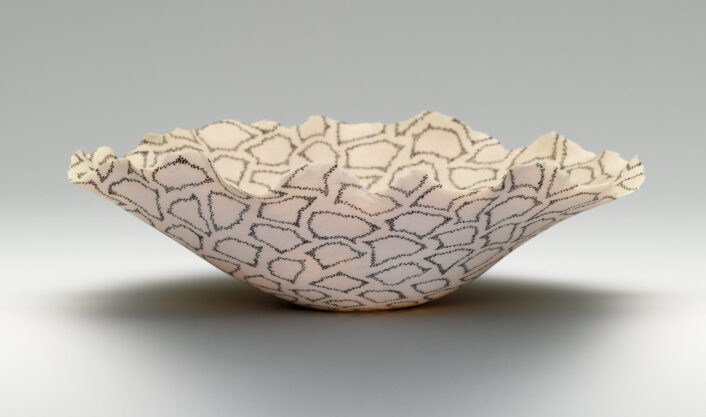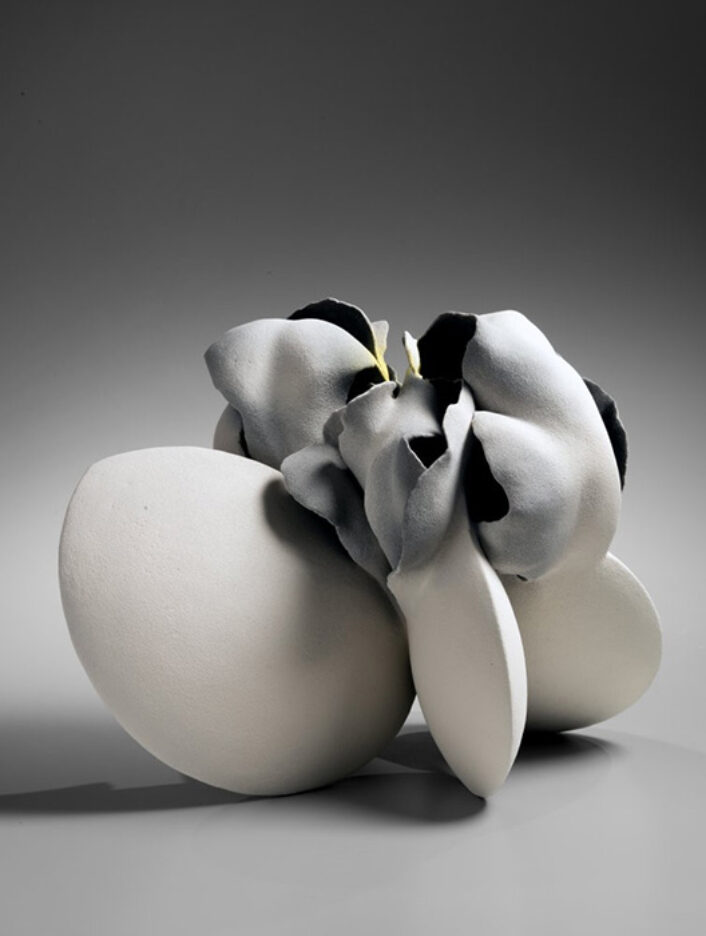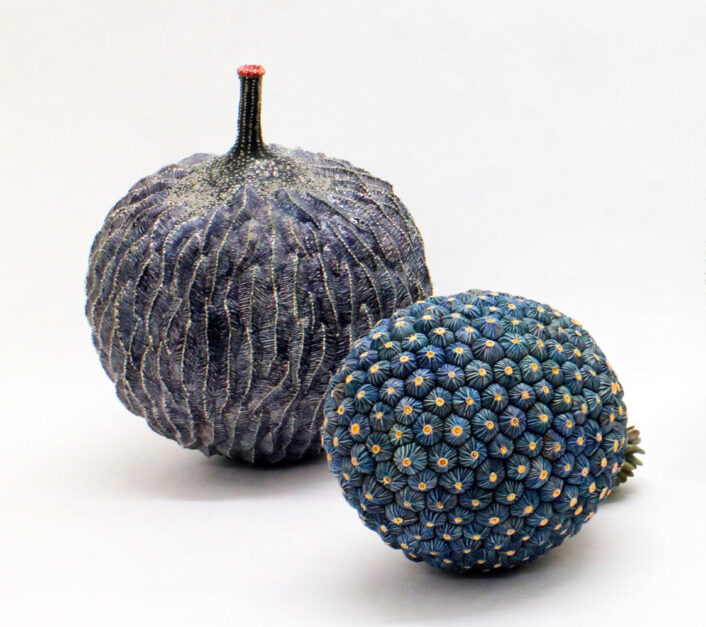Design
Raina Lee Ceramics
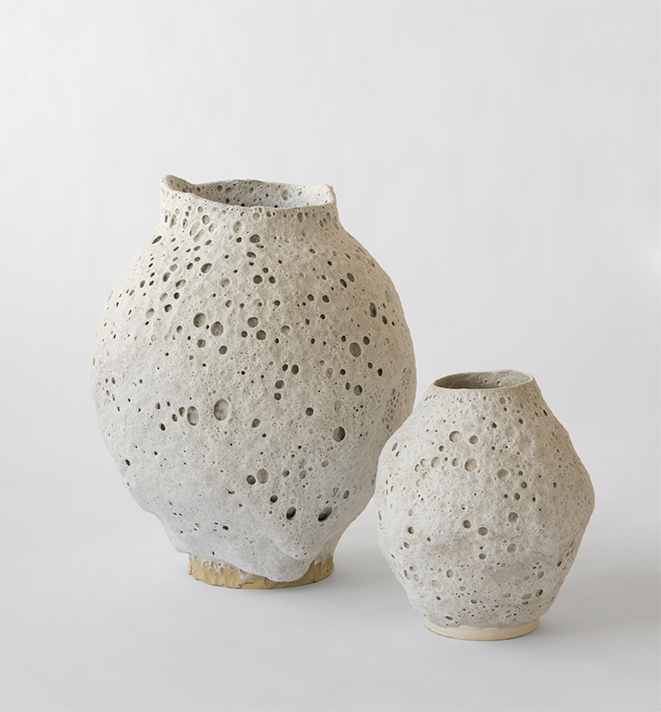
Some have called Lee’s glazes… “disturbing.”
Image courtesy of: Surface Magazine
Raina Lee is a Los Angeles-based ceramic artist that creates beautiful hand-formed ceramic vessels that have a Chinese flair to them. Lee often draws upon ancient traditions and Chinese antique reproductions from her childhood home as influence.
Important to Lee is planning as much as possible before beginning the piece; she often prototypes and tries a number of versions before finalizing a design. Following, the artist samples a number of glazes on test pieces. The process is done several times before the final piece is constructed. Lee says (courtesy of Faculty Department), ” Working with clay has so many steps, from making, to drying, to firing and glazing, that you have to plan it out before you start, or else you could be missing a major piece. I’m trying to combine this approach to one that is more loose, like the clay equivalent of a gesture drawing or a quick sketch. Otherwise, I know when a piece is done. I listen to my body and senses for a reaction. If it’s not done I just reglaze and fire again!”
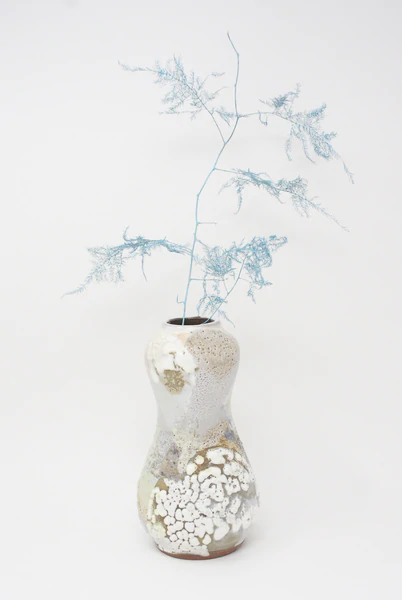
Keshiki Garlic Head Vessel in Multi. The vase is textured and a volcanic glaze is applied on the stoneware prior to it being fired multiple times. The interior is also glazed and water sealed.
Image courtesy of: Orboro Store
Initially, Lee was a writer and says that she started producing ceramics as a side hobby. Now, rather than using ceramics when she procrastinates, Lee uses it as a “balancing act.” The difference between the two forms of art is vast: writing procures time to be spent in abstract thought while ceramics involves actuality. For Lee, there is a level of satisfaction when she finishes firing and glazing which is quite different than constructing written words for a long period of time, and then, usually, it still is not done.
Lee is a voracious reader; a hobby that has enabled the artist to delve deeply into the history behind art and in particular, ceramics. Especially, the artist is fascinated with works from the Song Dynasty since they appear as though they were just constructed. She continues, “The technology is the same but the circumstances are different. Ceramics history informs my work, because it’s about the evolution of societies and us!”
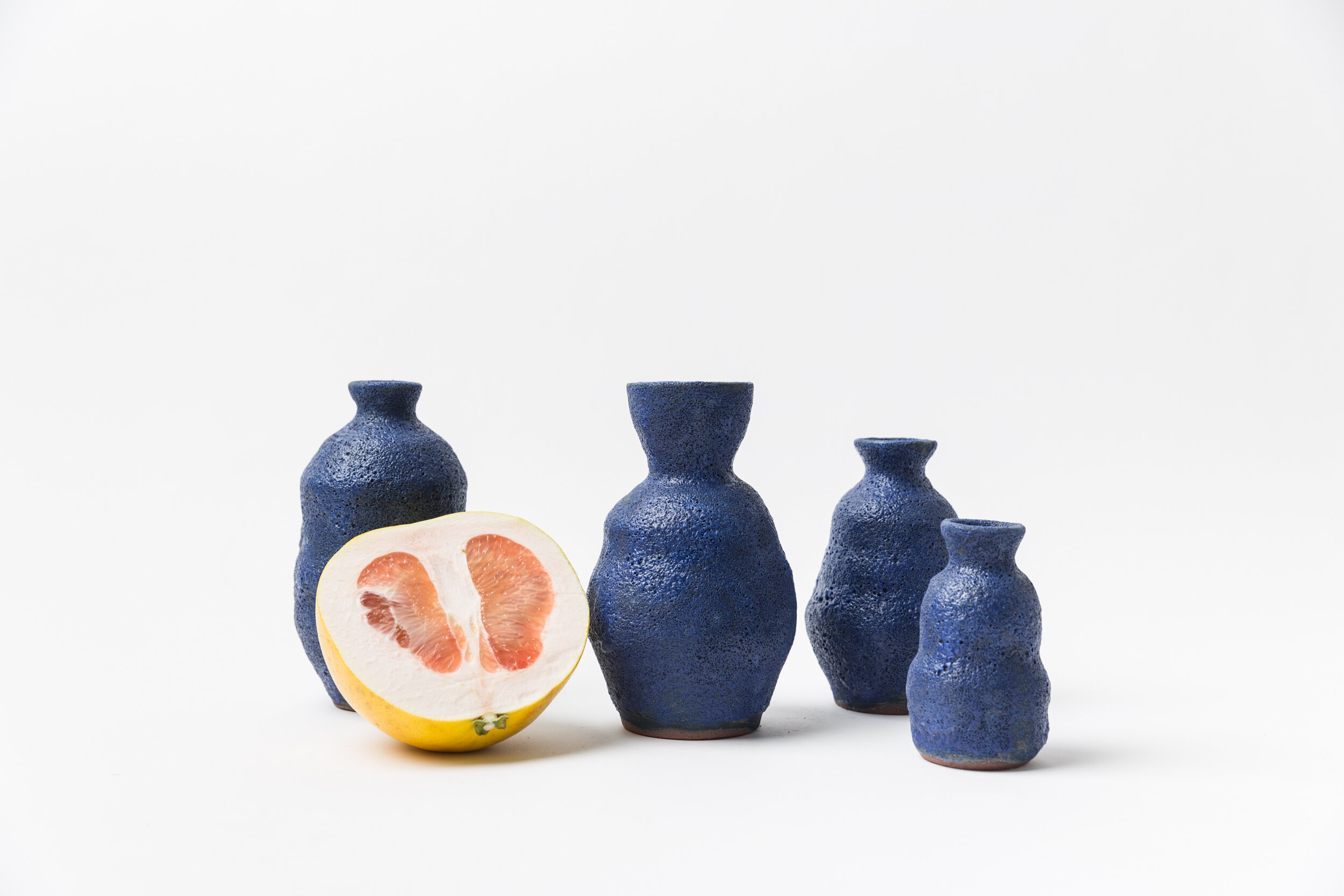
Klein Collection, 2020.
Image courtesy of: Raina Lee
Lee loves experimenting with glazes… creating unusual colors and unnatural yet enticing textures. She tries to duplicate colors and textures that can be found in nature by using compounds such as copper, iron, tin, magnesium, cobalt, and nickel. She told Ryan Waddiups for Surface Magazine, “I’m driving by the materials and seeing how much I can get them to do what I want.”
Most of Lee’s pieces employ heavy glazes which often bubble and foam; this is a byproduct of her interest in the ways glaze chemistry can make a number of different textures. A number of Lee’s piece have a volcanic surface that is achieved by an element in the glaze recipe that makes minuscule explosions in the kiln. Following this, the vessel is quickly cooled and set.
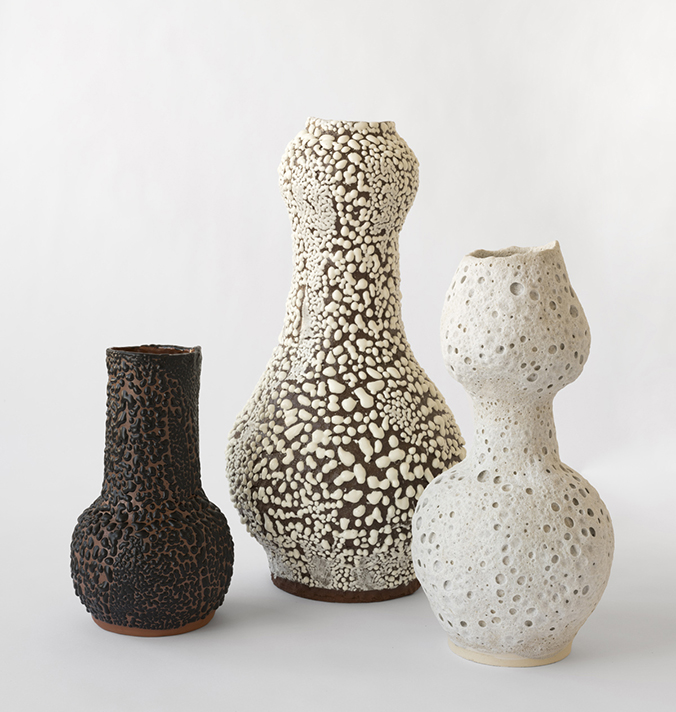
From the exhibition, “Homeworld”.
Image courtesy of: Surface Magazine
Recently, Lee worked on kintsugi; she worked with “healing” the small cracks in her pieces. Mending with lacquer gold following the firing is an ancient Japanese art of repairing broken pottery. As Lee believes in regards to repairing the breakages that occur “it’s better to work with them than against them.”
For Lee’s recent exhibition, her first solo show, “Homeworld” at Stroll Garden in Los Angeles, the artist amassed a collection of large-scale vessels that are inspired by ancient Greek, Iranian, and Chinese ceramics. These pieces have a lot of glaze and the shapes are thicker versions than ones Lee has made previously. Naturally, there was a learning curve with these new pieces as the glaze “behaved” quite differently. Increasing the thickness of the clay meant that the vessel could absorb more of the glaze. Following is Lee’s description of the “Homeworld” pieces, “My sculptural glazes, full of fissures and volcanic explosions, become puffy and more layered. One volcanic vessel resulted in craters upon craters, like they were inside each other.”
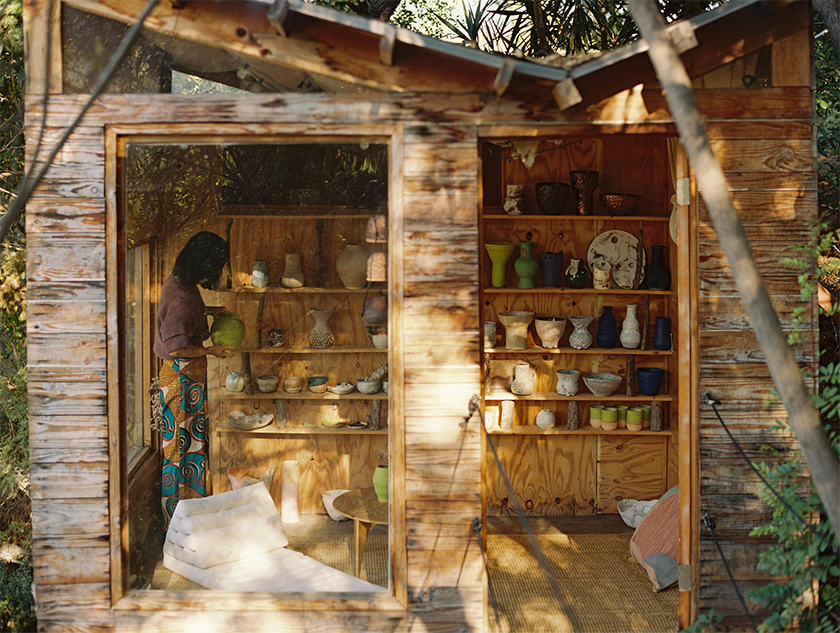
The treehouse is a refuge and Lee’s private office.
Image courtesy of: Faculty Department, photographed by: Justin Chung
Lee lives in a rural part of Los Angeles called Mount Washington. The area is quite hilly with many trees; nearby, there is a lot of empty land and trails behind the house. The A-frame wooden house where Lee resides has allowed her to turn the garage into her production space where she has a wheel-throwing area and where she glazes her pieces. Best of all is the treehouse where she is able to display her work as one cohesive body.
